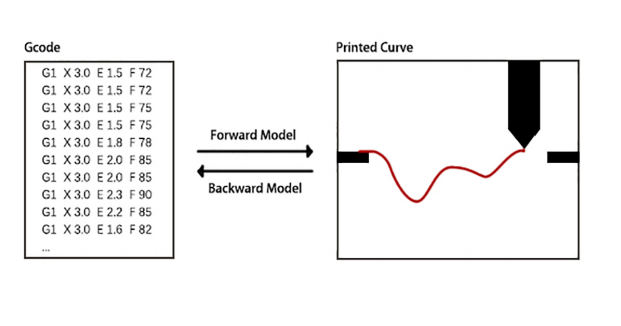Researchers from Tsinghua University are investigating artificial intelligence and all that surrounds it, from materials to workflow, performance, and all the elements of intelligent construction. Their experiments are outlined in the recently published, ‘Re-perceive 3D printing with Artificial Intelligence.’
 Today, artificial intelligence (AI) is becoming even more of a reality, and its uses continue to travel far beyond imagery, speech, and the ability to make choices. Architects are expanding construction methods with AI, and within digital construction, positively disrupting conventional practices—and offering enormous potential. In this study, the researchers explore the possibilities of finding new, universal methods for AI—along with mapping material/distribution properties to material behavior.
Today, artificial intelligence (AI) is becoming even more of a reality, and its uses continue to travel far beyond imagery, speech, and the ability to make choices. Architects are expanding construction methods with AI, and within digital construction, positively disrupting conventional practices—and offering enormous potential. In this study, the researchers explore the possibilities of finding new, universal methods for AI—along with mapping material/distribution properties to material behavior.
Their new system can print a spatial wireframe either in 2.5 or 3D, and without supports. Because of intermolecular forces and more, it is not possible to achieve comprehensive control of the printing process with basic software. The researchers studied automatic systems and image processing in order to create a model calculating the printed code, while the other predicts G-Code.
The main workflow includes:
- Development of an automatic mechanical system
- Training the forward and backward models
- Model and method evaluation
In model training, the researchers included:
- Deep learning
- Data augmentation
- Forward model
- Backward model
The ultimate goal is to propel a new manufacturing process forward, centered around the use of dynamic material properties. They report that their new model has ‘already achieved a positive result,’ with shapes printed accurately; however, there is still a concern as to whether they can predict a G-Code set for curves required for printing. Their new method expands the application of a scientific workflow and creates a direct end-to-end connection—from fabrication to the final form.
“… compared to the traditional method of developing material models that require different fields of knowledge and workflow for different material properties, the method and logic of the work described in this paper is universal and proven to be capable of generalization when applied to producing a diversity of material performance models that encompass multiple systems of non-related material behavior, such as the active process of bending elastomer and the reform process of melting thermoplastics.
”For architects, architectural design ultimately relies on the selection and construction of materials. In the long run, new building materials and new construction methods will bring about tremendous changes in the construction industry, as well as new architectural styles. We believe that the approach presented in this article will be a positive inspiration to herald this change,” concluded the researchers.
Artificial intelligence is gaining further ground and accompanies 3D printing and other related technologies too as researchers around the world endeavor to seek further imaging recognition capabilities, use it as a measuring device in 3D printing, and even analyze cardiac health.
What do you think of this news? Let us know your thoughts! Join the discussion of this and other 3D printing topics at 3DPrintBoard.com.
[Source / Images: ‘Re-perceive 3D printing with Artificial Intelligence’]Subscribe to Our Email Newsletter
Stay up-to-date on all the latest news from the 3D printing industry and receive information and offers from third party vendors.
You May Also Like
Precision at the Microscale: UK Researchers Advance Medical Devices with BMF’s 3D Printing Tech
University of Nottingham researchers are using Boston Micro Fabrication‘s (BMF) 3D printing technology to develop medical devices that improve compatibility with human tissue. Funded by a UK grant, this project...
3D Printing Webinar and Event Roundup: April 21, 2024
It’s another busy week of webinars and events, starting with Hannover Messe in Germany and continuing with Metalcasting Congress, Chinaplas, TechBlick’s Innovation Festival, and more. Stratasys continues its advanced training...
3D Printing Webinar and Event Roundup: March 17, 2024
It’s another busy week of webinars and events, including SALMED 2024 and AM Forum in Berlin. Stratasys continues its in-person training and is offering two webinars, ASTM is holding a...
3D Printed Micro Antenna is 15% Smaller and 6X Lighter
Horizon Microtechnologies has achieved success in creating a high-frequency D-Band horn antenna through micro 3D printing. However, this achievement did not rely solely on 3D printing; it involved a combination...
































